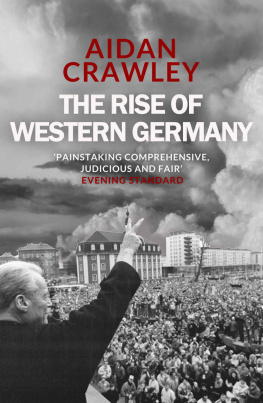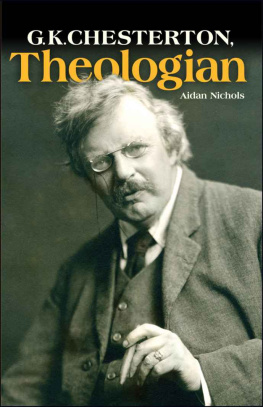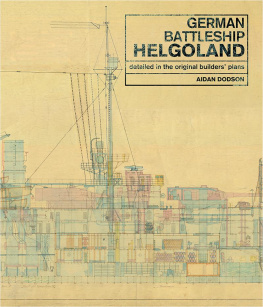Aidan Crawley - Escape From Germany
Here you can read online Aidan Crawley - Escape From Germany full text of the book (entire story) in english for free. Download pdf and epub, get meaning, cover and reviews about this ebook. year: 2018, publisher: Sharpe Books, genre: History. Description of the work, (preface) as well as reviews are available. Best literature library LitArk.com created for fans of good reading and offers a wide selection of genres:
Romance novel
Science fiction
Adventure
Detective
Science
History
Home and family
Prose
Art
Politics
Computer
Non-fiction
Religion
Business
Children
Humor
Choose a favorite category and find really read worthwhile books. Enjoy immersion in the world of imagination, feel the emotions of the characters or learn something new for yourself, make an fascinating discovery.

- Book:Escape From Germany
- Author:
- Publisher:Sharpe Books
- Genre:
- Year:2018
- Rating:3 / 5
- Favourites:Add to favourites
- Your mark:
- 60
- 1
- 2
- 3
- 4
- 5
Escape From Germany: summary, description and annotation
We offer to read an annotation, description, summary or preface (depends on what the author of the book "Escape From Germany" wrote himself). If you haven't found the necessary information about the book — write in the comments, we will try to find it.
Escape From Germany — read online for free the complete book (whole text) full work
Below is the text of the book, divided by pages. System saving the place of the last page read, allows you to conveniently read the book "Escape From Germany" online for free, without having to search again every time where you left off. Put a bookmark, and you can go to the page where you finished reading at any time.
Font size:
Interval:
Bookmark:
If you enjoyed Escape from Germany check out Endeavour Presss other books here: Endeavour Press - the UKs leading independent publisher of digital books .
For weekly updates on our free and discounted eBooks sign up to our newsletter .
Follow us on Twitter and Goodreads .
Escape from Germany
Aidan Crawley
Copyright Aidan Crawley 1985
The right of Aidan Crawley to be identified as the author of this work has been asserted by him in accordance with the Copyright, Designs and Patents Act, 1988.
First published in the United Kingdom in 1985 by Her Majestys Stationery Office.
This edition published in 2015 by Endeavour Press Ltd.
Table of Contents
Introduction
Over the many years that have elapsed since 1945, numerous books have been written about airmen who, having fallen into enemy hands in the course of operations, attempted to escape from their prisoner-of-war camps and make their way back home, borne of these books, such as Boldness Be My Friend , The Wooden Horse , The Colditz Story , and The Great Escape , have become classics, for they contain all the elements of high drama. Yet, for all the accounts of individual incidents, rarely does one find the whole saga of escape brought together into one volume. Here lies the importance of this book.
It was in 1945, as the prisoners were coming home, that the Air Ministry decided to commission a full account of the methods of escape that had been used by members of the Royal Air Force over the previous six years of the war against Germany; as well as providing an historical record for future reference, this would also it was hoped serve as a guide to those who might line! themselves in similar predicaments in the future. The invitation to compile the account was given to Squadron Leader Aidan Crawley, a pre-war journalist who had flown with the RAF, spent nearly four years in captivity, and then been elected a Member of Parliament. So, for the best part of the next two years he combined with his parliamentary duties the task of writing this book under the aegis of the Air Historical Branch.
Since, not surprisingly, no written records about escape had been kept in the prisoner-of-war camps, much of his material had to be obtained verbally or from accounts written some time after the events they described, and for certain sections he drew largely on his own memory. While he judged most prisoners accounts to be reliable, inevitably there were occasional discrepancies which he could not resolve, and not every date or figure could be absolutely vouched for.
Of the many ex-prisoners who helped him in one way or another, three were mentioned by name. Commander P E Fanshawe RN and Squadron Leader R G Kerr-Ramsey, who had contributed much to the success of the great tunnel at Stalag Luft III, both wrote long manuscripts which were drawn on extensively, and Squadron Leader C B Flockhart, who as Warrant Officer Flockhart had been one of the few actually to make a successful home run, gave assistance without which the book could not have been written at all. After the war, as the result of hundreds of interviews, he had compiled a record of events in every camp in Germany in which Air Force prisoners had been held, and for Part II of the book his work was an essential and sometimes the only source of information. In addition, he wrote the first draft of the chapters dealing with the NCOs camps and the Escapers Camp at Colditz, and he went through the whole text with great care to ensure that the experience of the NCOs was adequately covered.
By a strange quirk of fate it was the author himself, newly appointed Parliamentary Under Secretary of State for Air, who was invited to decide in 1950 whether his book, at last ready for printing, could be published commercially; bearing in mind the wars now under way in Korea and Malaya, he decided that it would be unwise to publicise details of our escape methods, and the book was therefore restricted to official use. In 1956, however, authority was given for an expurgated edition to be published under the authors own name, but the full official edition has until now remained closed.
As I re-read the book prior to writing this introduction, I soon realised that there was one major omission. I knew that the author had himself spent years as a guest of the Germans, but the book said virtually nothing of his own experiences. Partly for the sake of the record and partly to enable due tribute to be paid to him personally, I therefore asked him to tell me something about what had happened to him, and it is my privilege to recount here his own story.
It was 1936 when Aidan Crawley decided to join No 601 (County of London) Squadron of the Auxiliary Air Force. For the previous six years, after graduating in History from Trinity College Oxford and nearly gaining selection to play cricket for England, he had worked as a journalist for the Daily Mail and then as a producer of documentary films, coupling this with the task of commentating during the experimental stages of BBC Television. In the course of these activities he had travelled widely both at home and abroad, including the United States, China, India and Palestine, and had gained some feel for the House of Commons as a lobby correspondent. Now deeply concerned about the problem of unemployment he decided to join the Labour Party, while at the same time his anxiety about the world situation and his interest in flying prompted him to ensure that, should war come, he would be able to play his part as an airman.
So it was that, when war broke out in 1939 and his squadron was called up to Tangmere, he was sent on a conversion course to learn to fly the Blenheim, and spent the winter months of 1939/40 carrying out night fighter patrols over the Channel first in the Blenheim and then in the Hurricane. In April 1940 it was decided to make use of his wide pre-war experience and his knowledge of German by seconding him to the Balkan Intelligence Service, where he spent the next year based in Turkey and visiting from time to time both Bulgaria and Yugoslavia. He was actually in Sofia in March 1941 when the Germans took over, causing him to have to be smuggled out via Belgrade. His intelligence activities now at an end he was given the chance to return to flying, and in June joined No 73 Squadron, based at Sidi Hanish, not far from the Italian frontier near Bardia in North Africa. The squadrons Hurricanes were tasked to protect British barges delivering supplies to the besieged garrison in Tobruk, but early in July it was decided to try to take the offensive by carrying out fighter sweeps over enemy occupied territory. Although Squadron Leader Crawley and another Squadron Commander involved expressed their concern about these tactics, several squadrons took off at 1710 hours on 7 July to carry out ground strafing in the area of Great Gambut. In Crawleys words, they were sitting targets and of the six aircraft belonging to No 73 Squadron only one returned. Crawley himself was shot down by a machine gun on the ground and had to crash-land right in the middle of a company of Germans.
Now a prisoner, he spent three nights in custody in North Africa before being flown to Athens and then Salonika. During the train journey from there to Vienna a German soldier provided him and his travelling companion with some magazines, including a copy of Berline Illustrierte; to their utter surprise the frontispiece was a picture of Crawley, who was described as a great explosives expert and a dangerous member of the British Secret Service. He had apparently been planting bombs all over the place before being smuggled out of Sofia. Though there was very little truth in the story, Crawley was thankful for his dishevelled appearance and took the first opportunity to drop the magazine out of the window. Fortunately the Germans never discovered that he had been in the Balkan Intelligence Service.
Font size:
Interval:
Bookmark:
Similar books «Escape From Germany»
Look at similar books to Escape From Germany. We have selected literature similar in name and meaning in the hope of providing readers with more options to find new, interesting, not yet read works.
Discussion, reviews of the book Escape From Germany and just readers' own opinions. Leave your comments, write what you think about the work, its meaning or the main characters. Specify what exactly you liked and what you didn't like, and why you think so.










